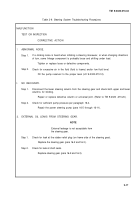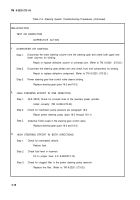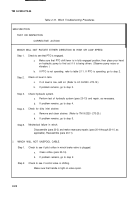TM-9-2320-273-34 - Page 43 of 801
TM 9-2320-273-34
Section Ill. GENERAL MAINTENANCE
2-5. General,
This section provides general instructions for cleaning, inspection, and repair of vehicle
component parts. Publications are listed in appendix A that provide additional information on general
shop practice techniques, sheet metal work, welding, etc.
2-6. Cleaning.
The procedures for cleaning will be the same for most parts and components which
comprise the vehicle components. To avoid repetition of instructions, the general procedures for
cleaning are detailed in a through e, below. Any cleaning procedures which are peculiar to a specific part
or component are covered in the section or paragraph relating to the item.
a. General lnstructions.
The importance of cleaning must be thoroughly understood by maintenance
personnel. Great care and conscientious effort are required in all cleaning operations. The presence of
dirt or foreign substances is a constant threat to satisfactory vehicle operation and maintenance. The follow-
ing should apply to all cleaning operations.
(1)
Clean all parts before inspection, after repair, and before assembly.
(2)
Hands should be kept free of any accumulation of grease which can collect dust and grit.
(3)
After cleaning, all parts should be covered or wrapped in plastic or suitable paper to protect
them from dust and dirt.
b. Castings.
(1)
Clean inner and outer surfaces of castings and all areas subject to oil and grease with dry-
cleaning solvent (item 12, App B).
(2)
Remove sludge and gum deposits from castings
using a stiff brush.
WARNING
Particles blown by compressed air are
hazardous. Make certain air stream is
directed away from user and other
personnel in the area.
(3)
Use clean, dry, compressed air to blow out and dry all tapped holes in castings.
c.
Oil Passages.
Particular attention must be given to all oil passages in castings and machined parts.
All oil passages must be clean and free of obstructions.
(1)
Clean passages with wire or a suitable probe to break Up any sludge or gum deposits.
(2)
Wash passages by flushing with drycleaning solvent.
(3)
Dry passages by blowing them out with compressed air.
2-27
Back to Top




















